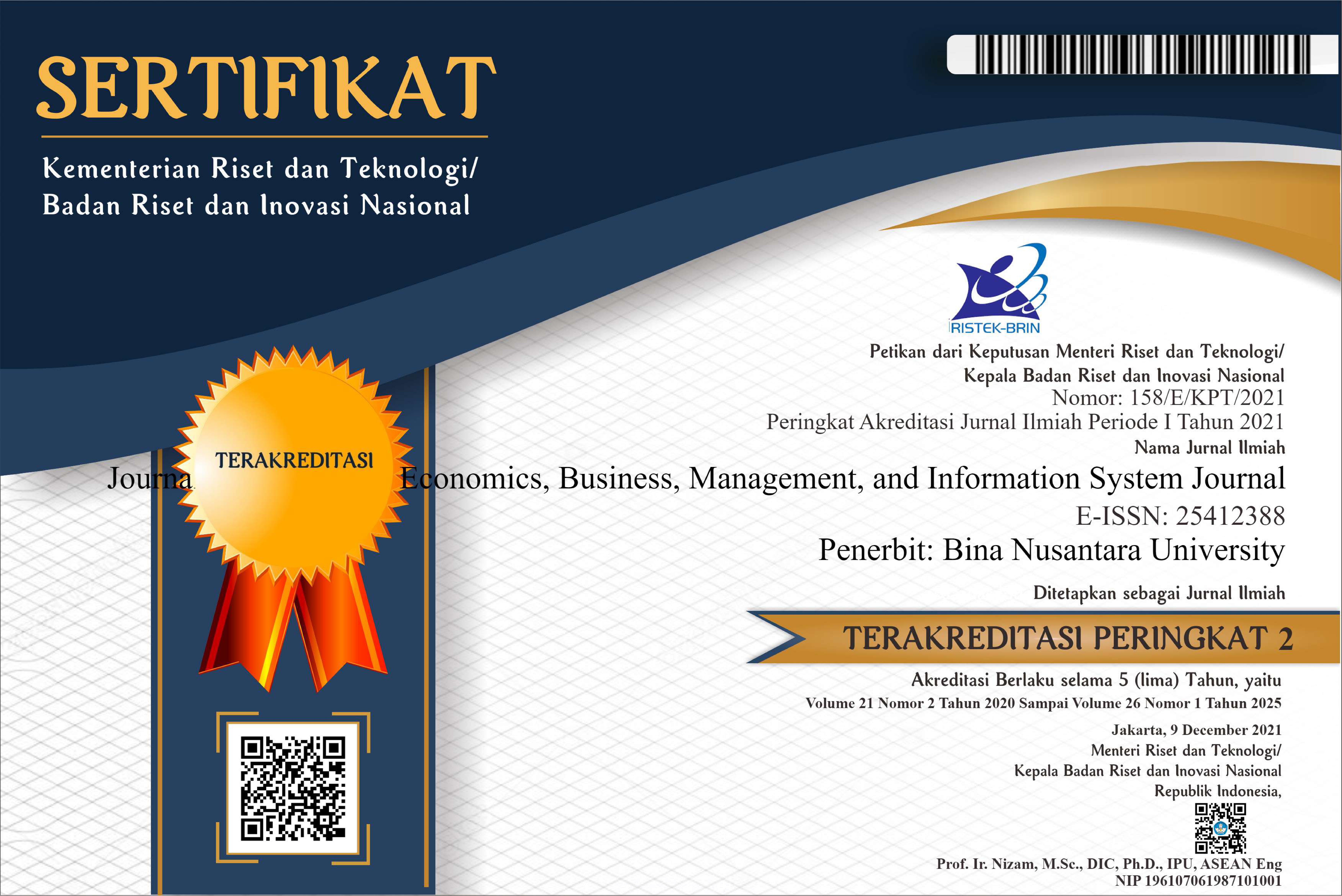Improving The Average Session Evaluation Score Of Supervisory Programby Using PDCA Cycle At PT XYZ
DOI:
https://doi.org/10.21512/tw.v17i2.1972Keywords:
Session Evaluation, Program Quality Index, Subject Content Index, Facilitator Evaluation Index, Training Effectiveness, PDCAAbstract
PT XYZ took People Development tasks as important things in order to provide great leaders for handling its business operations. It had several leadership programs such as basic management program, supervisory program, managerial program, senior management program, general management program, and the executive program. For basic management and supervisory programs, PT XYZ had appointed ABC division to solely handled them, while the rest, ABC division should cooperate with other training providers who were reputable in leadership ones. The aim of this study was to ensure that the appropriate leadership style has been delivered accordingly to the guideline to the employees by ABC division to improve the average session evaluation score of the supervisory program by using PDCA (Plan, Do, Check, and Action) cycle. The method of this research was by gathering quantitative and qualitative data by using session and program evaluation format to see current condition. The research finds that the reasons why the program is below target 4,10 score. It is related to the new facilitator, no framework, and teaching aids.
Plum Analytics
References
Belker, L. B., McCormick, J., & Topchik, G. S. (2012). The First-Time Manager. US: AMACOM.
Harris, T.B, Wonjoon, C., Hutchins, H. M., & Chiaburu, D. S. (2014). Do Trainer Style and Learner Orientation Predict Training Outcomes? Journal of Workplace Learning, 26(5), 331-344.
Hessen, S. C. (2015). ISO 9001:2015 and the 8 Quality Management Principles to take you to the Head of the Class. Retrieved May 31st 2016 from http://pilgrimquality.com/blog/iso90012015-quality-mgmt-principles/
Jonny. (2016). Training Effectiveness Analysis at PT XYZ using Kirkpatric Model and Return of Training Investment (ROTI). Journal of Binus Business Review, 7(2), 137-141.
Kaplan, R. S., & Norton, D. P. (2004). Strategy Maps: Converting Intangible Assets into Tangible Outcomes. Massachusetts, USA: Havard Business School Publishing Corporation.
Kirkpatrick, J., & Kirkpatrick, W. K. (2009). The Kirkpatrick Four Levels: A Fresh Look After 50 Years 1959-2009. Retrieved February 11th 2016 from http://www.kirkpatrickpatners.com/portals/0/resources/kirkpatrick%20Four%20Levels%20white%20paper.pdf.
Maxwell, J. C. (2013). The 5 Levels of Leadership. US: Hodder & Stoughton General Division.
McCarty, T., Daniels, L., Bremer, M., & Gupta, P. (2005). The Six Sigma Black Belt Handbook. USA: McGraw Hill.
Sutyanto, D. (2013). Indonesia’s Top Ten Companies Ranked by Largest Market Capitalization. Retrieved May 31st 2015 from http://www.indonesia-investments.com/finance/financial-columns/indonesias-top-ten-companies-ranked-by-largest-market-capitalization/item637.
The World Bank. (2016, 31 May). Market Capitalization of Listed Domestic Companies (% GDP). Retrived May 31st May 2016 from http://data.worldbank.org/indicator/CM.MKT.LCAP.CD
Downloads
Published
Issue
Section
License
Authors who publish with this journal agree to the following terms:
a. Authors retain copyright and grant the journal right of first publication with the work simultaneously licensed under a Creative Commons Attribution License - Share Alike that allows others to share the work with an acknowledgment of the work's authorship and initial publication in this journal.
b. Authors are able to enter into separate, additional contractual arrangements for the non-exclusive distribution of the journal's published version of the work (e.g., post it to an institutional repository or publish it in a book), with an acknowledgment of its initial publication in this journal.
c. Authors are permitted and encouraged to post their work online (e.g., in institutional repositories or on their website) prior to and during the submission process, as it can lead to productive exchanges, as well as earlier and greater citation of published work.
USER RIGHTS
All articles published Open Access will be immediately and permanently free for everyone to read and download. We are continuously working with our author communities to select the best choice of license options, currently being defined for this journal as follows: Creative Commons Attribution-Share Alike (CC BY-SA)

















